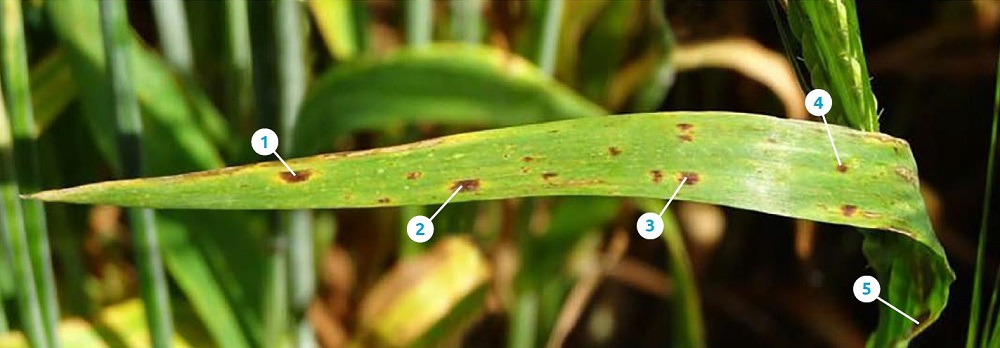Ramularia research results in suspended forecast service
Tuesday, 20 November 2018
A project to extend a Scottish ramularia leaf spot (RLS) forecast service to the rest of the UK resulted in the cessation of the forecast completely.
RLS, caused by Ramularia collo-cygni, is a major fungal disease of UK winter and spring barley.
Leaf wetness around the start of stem extension was considered to be the most influential environmental driver of RLS risk. However, the research found that many more risk factors, and their interactions, needed to be considered by the forecast model for robust predictions to be delivered.
Forecasting ramularia is considered desirable, because varietal resistance is limited and visual symptoms only appear late in the growing season, when fungicides can no longer be applied.
With little information to guide spray decisions, high levels of fungicide use have fuelled the development of resistance in the pathogen – firstly to strobilurins in 2002, followed by widespread resistance to azoles and SDHIs in 2017. The only active ingredient that remains fully effective against RLS in the UK is chlorothalonil.
Catherine Garman, who manages disease research at AHDB, said: “This project set out to refine the ramularia forecast model and extend it to the whole of the UK, for both spring and winter barley crops. The complex risk environment, however, led the researchers to conclude that the Scottish model was not refined enough. This resulted in its withdrawal early on in the project.”
The project used disease information from winter and spring barley Recommended List (RL) trials (2015 to 2017), other trials and relevant weather data, to improve understanding of the factors that increase ramularia risk.
Rainfall, temperature and leaf wetness were found to influence risk. Other key factors, including sowing date and variety, did not appear to be significant.
In relation to temperature, the project found results that conflicted with previous understanding. For example, results from spring barley sites in 2017 found that, although increased leaf wetness was associated with more disease, higher temperatures led to a significant increase in RLS levels. An associated PhD student, which looked at historic SRUC trial data from 25 trials, also failed to identify a consistent environmental variable linked to disease epidemics.
At present, growers judge RLS risk based on broad geographic locations. Although the work confirmed that risk increases toward the North and West of the UK, the findings also showed that variation in disease levels within these regions is considerable.
The strong and poorly understood influence of the environment on RLS development in crops also flagged potential issues in deriving reliable resistance ratings from such a diverse set of trials. Last month (3–4 October), project findings were discussed at an international ramularia workshop and it was agreed to suspend the disease ratings in the next RL.
AHDB plans to run specific RLS trials next year. The trials will be located in known high-disease pressure areas, with other diseases controlled (as much as possible) and disease assessments made by specialist pathologists.
For further information on the research, read final project report PR600.
For further information on the RLS workshop, read Catherine Garman’s blog.
For information on RLS, including how to identify the disease, visit ahdb.org.uk/knowledge-library/ramularia
Ramularia leaf spot in barley

The '5Rs': (1) Ringed with yellow margin of chlorosis, (2) Rectangular shape, (3) Restricted by the
leaf veins, (4) Reddish-brown colouration, (5) Right through the leaf.

